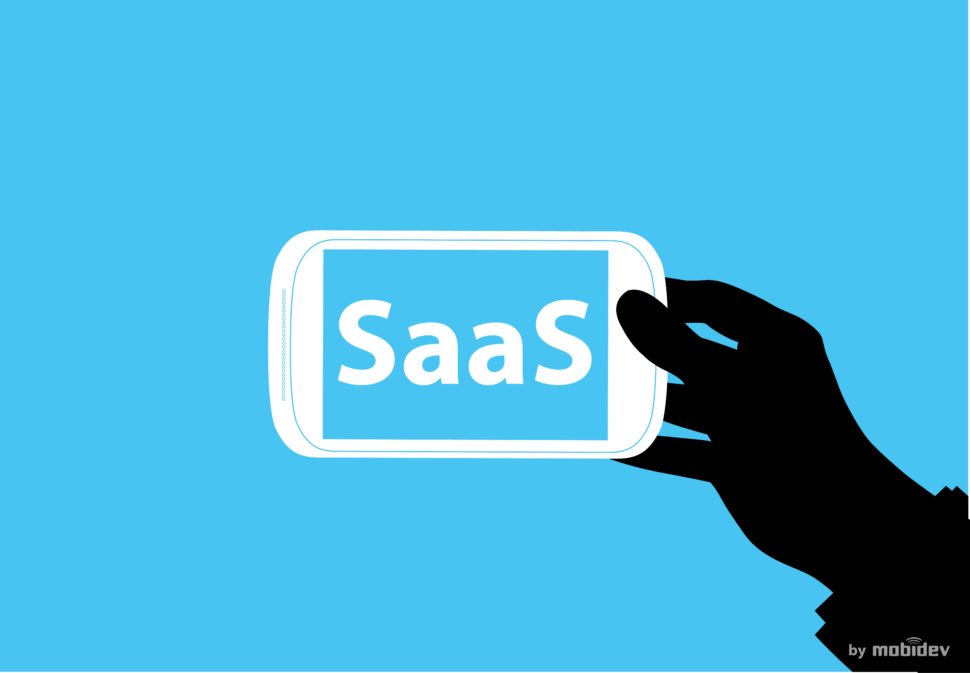What is SaaS? Sales, Meaning & Definition Explained

Most business owners have heard about SaaS (Software as a service), but not many of them know what it is. Is it a new terminology? Is it a new business model? The acronym SaaS stands for Software as a Service, which basically means that software is hosted and delivered through the internet on a subscription basis. This digital business model is the most popular one because it is the most convenient and flexible. According to Forbes, SaaS is the future of enterprise software, for example, IBM defines SaaS as “software, infrastructure, and services, via the cloud”.
This blog will look at the definition of SaaS, how it is sold and what it means to be SaaS.

What is SaaS Meaning?
SaaS stands for “Software as a Service.” SaaS is a model of software delivery where the provider delivers an application to customers using the Internet. SaaS is often referred to as “on-demand” software because it is delivered over the Internet via the cloud. For example, email is often associated with email, calendaring, and office tools (such as Microsoft Office 365).
The main benefit of SaaS is that it allows you to purchase and use an application without having to install anything on your computer. The application runs on the provider’s servers, not on your personal computer.
Sales as a service (SaaS) is a type of third-party logistics (3PL) that allows businesses to outsource their sales operations to a third-party provider. The third-party provider manages all aspects of the sales process, from lead generation to closing the deal.
SaaS sales can be an attractive option for businesses that want to focus on their core competencies and leave the sales process to a third-party expert. It can also be a cost-effective way to scale a sales operation, since businesses only pay for the services they use.
Overall, SaaS sales can be a helpful way for businesses to focus on their core operations and leave the sales process to a third-party expert.
Benefits of SaaS
- Cloud-based managed services eliminate the need for on-premise hardware and software. This results in reduced IT costs and increased flexibility for businesses.
- Streamlined deployment processes mean that your employees can get up to speed quickly and make changes without having to wait on IT support staff.
- Software updates are managed centrally by the vendor or service provider, so there’s no need for you to keep up with patches or upgrades as they become available.
- Integration with other applications is simplified because all data resides in one database rather than being scattered across multiple systems like it would be if you were hosting your own software on your own servers
- It’s convenient for users because they don’t need to download or install any software on their computers.
- It’s cost-effective for companies because there are no upfront costs for purchasing software licenses or servers. All costs are paid for as usage occurs over time through subscription fees charged by providers based on usage volume (e.g., number of users).
SaaS Definition
In Simple words:
“SaaS is the method of delivering and licensing software online through a subscription rather than by the purchase and installation of software on individual computers”
The cloud computing model allows users to access the application from different locations via a web browser with little or no configuration.
SaaS is typically accessed by users using a thin client via any device that has a web browser, such as personal computers, tablets and smartphones. This eliminates the need for native applications, which are expensive to develop and maintain. A SaaS solution offers advantages over traditional packaged software and customer self-service:
- It requires minimal IT resources on the part of the user organization because there is no need to install software locally;
- It can be deployed quickly and easily scaled up or down according to demand;
- It eliminates upfront costs associated with purchasing hardware and software licenses;
- It allows the marketing team to focus on their core business applications rather than on maintaining complex technology infrastructure.
The Importance of SaaS for Business:
By now, you’ve probably clear understanding of what SaaS is (Software as a Service). The advantages of SaaS continue to grow, and businesses are taking notice. In fact, a recent survey by Red Hat found that among those who use cloud computing, 91% said it helps them focus on business to qualify leads and outcomes rather than infrastructure management.
The survey also found that organizations using cloud computing have a 24% higher rate of innovation than those that don’t. And companies using cloud computing expect their revenue to grow at twice the rate of companies not using it. Here are three reasons why SaaS is important for business:
- Low upfront costs: SaaS eliminates the need for large up-front investments in hardware and other capital expenses, which helps reduce your risk of failure and gives you more flexibility when planning your budget.
- Scalability: SaaS can be scaled up or down depending on your needs, so you don’t pay more than you need to while still gaining access to all the features of the software package at any time during its life cycle.
- Accessibility: Because SaaS is accessed through the cloud, users can access it from any device with an internet connection — laptops, desktops, or mobile devices like smartphones or tablets — making it easy for employees to collaborate regardless of where they are located or what kind of computer they use at work
Is Skype SaaS?
Yes! Skype for Business Server is cloud-based communication and collaboration solution, that offers the best communication and collaboration capabilities in the industry as part of Software as a Service (SaaS).
Skype’s approach is similar to that of other cloud-based services like Google Docs or Dropbox: The software runs in the background on remote servers owned by Microsoft. Users access these services through their web browsers or native applications installed on their computers or mobile devices.
But there’s one key difference between Skype and these other services: You don’t need an Internet connection to use Skype. In fact, you can even make calls over Wi-Fi when you’re offline (although this won’t work if you’re using a mobile device).
What Are SaaS Sales?
SaaS Sales is the process of selling software as a service (SaaS) products. SaaS products are web-based applications that are sold on a subscription basis or during sales cycles. The term SaaS comes from software as a service, which refers to the way these products are delivered and consumed. SaaS sales are typically managed by the SaaS sales team.
There are two main types of SaaS sales:
Billing-based SaaS sales: This is when new or existing customers pay a subscription fee in advance for the products they receive. They use the product as long as they maintain their subscription, but they have no ownership of it.
License-based SaaS sales: This is when customers pay an upfront fee for the right to use the product for a specified period of time — usually one year.
Recent Posts
Watch our Podcast

THE ULTIMATE GUIDE TO FREIGHT SHIPPING THROUGH FLORIDA PORTS
When it comes to ocean freight shipping in Florida, there is a lot to know to ensure you follow the appropriate steps when shipping into and out of Florida Ports.
Just enter in your email address and receive your FREE E-Book in minutes!